LEGEND: TALAT MAHMOOD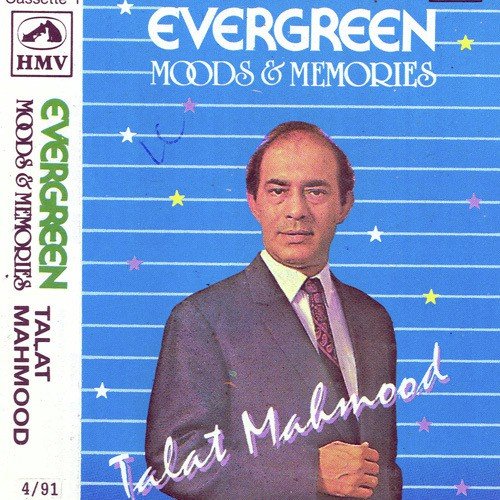
Replies sorted oldest to newest
LEGEND: TALAT MAHMOOD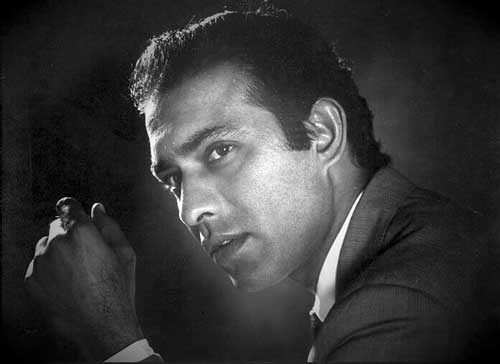
LEGEND: TALAT MAHMOOD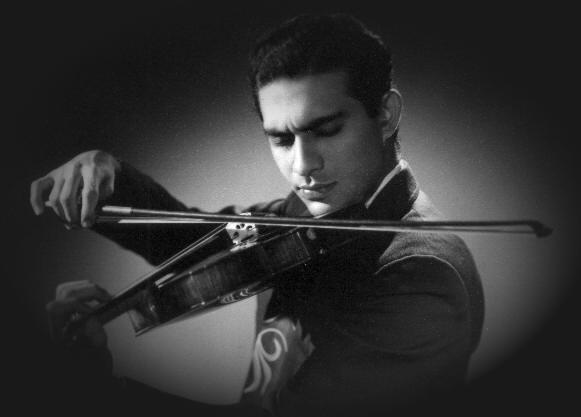
LEGEND: TALAT MAHMOOD WITH FRIENDS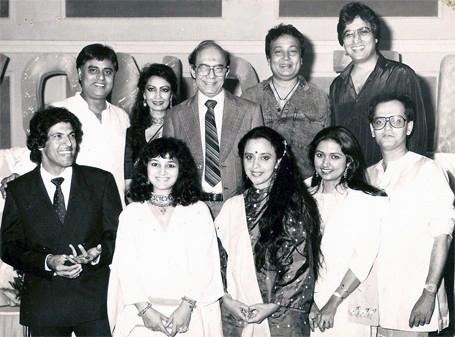
Shahenshah-e-Ghazal Talat Mahmood with
Jagjit & Chitra Singh, Bhupinder, Talat Aziz
Pop singers Gary Lawyer, Alisha Chinai, Ila Arun, Mitali, Nandu Bhende.
LEGEND: TALAT MAHMOOD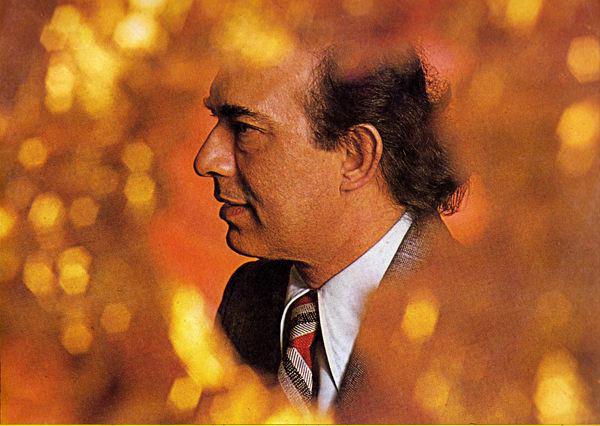 TALAT MAHMOOD: LEGEND ARE FOREVER
TALAT MAHMOOD: LEGEND ARE FOREVER
LEGEND: TALAT MAHMOOD
'A PERFECT GENTLEMAN'
'VELVET VOICE OF INDIA':
THESE ARE SOME OF THE MANY ACCOLADES SHOWERED ON THE MAN HISTORY KNOWS AS TALAT MAHMOOD...... AN ENORMOUSLY TALENTED SINGING STAR WHO BECAME A LEGEND IN HIS LIFETIME ! EVERY SONG THAT TALAT MAHMOOD SANG POSSESSED A HUSHED MAJESTY AND AN ABIDING GRACE WHICH ARE FOREVER EMBEDDED IN THE HEARTS OF HIS MILLIONS OF FANS ALL OVER THE WORLD. TALAT MAHMOOD WILL ALWAYS BE REMEMBERED AS ONE OF THE GREATEST SINGING STARS OF ALL TIMES !!!
LEGEND: TALAT MAHMOOD:
Talat Mahmood (February 24, 1924 – May 9, 1998) was a popular Indian playback singer and film actor. A recipient of Padma Bhushan he is famous for his ghazals, resulting in a title of "king of ghazals" bestowed upon him by fans and critics.
Talat saab as he is now referred to, has often been described as a singer with a silky voice. His voice never suited loud songs, songs that demanded a high-pitched range. Shouting or screaming didn't suit him and so he avoided those kinds of songs too. He only sang soft, romantic, lyrical, ghazals.Talat saab went for his vocal training in Bhatkhande music college lucknow
Continues.........
LEGEND: TALAT MAHMOOD:
Early days
Talat Mahmood was born in Lucknow, India, on February 24th 1924. he was one amongst six children and his father Manzoor Mahmood ran an electrical curio store. Talat showed his musical leanings from a very young age and would enjoy sitting through all-night music soiree's listening patiently to some of the biggest names in classical Indian music then.
Talat's father was a good singer as were his sisters. But coming from a conservative Muslim background, singing was not encouraged. Talat had to choose between a career in acting and singing and staying at home. He opted for the former, though the family accepted the fact only about a decade later when the industry gained respectability. His conservative parents had objected to him becoming a singer though they also were musical people. Things only began improving when people from respectable families started joining the industry. He didn't discourage his son from singing either.
Continues....
LEGEND: TALAT MAHMOOD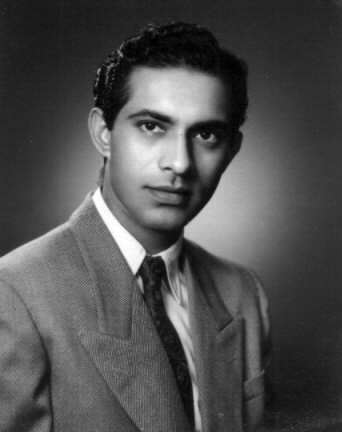
The stunning good looks that had women swooning .... whether in a concert hall or in a cinema hall !
LEGEND: TALAT MAHMOOD
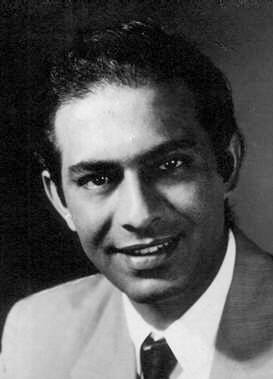
The 50's was the era of the Singing Star. America had Elvis Presley, England had Cliff Richard and India had Talat Mahmood ! Handsome, good looking men with fantastic voices and a distinguished style of singing that was all their own. The mere mention of their names on the silver screen was enough to pull in female crowds looking for gentle romantic fare, with clean cut story lines. Whether Elvis, Cliff or Talat, these singers were packaged and presented on the silver screen with the utmost of care. Nothing was left to chance. For them, it was nothing but the biggest producers, the biggest banners, the topmost heroines and of course, hand picked music composers to create those scintillating musical scores !
LEGEND: TALAT MAHMOOD
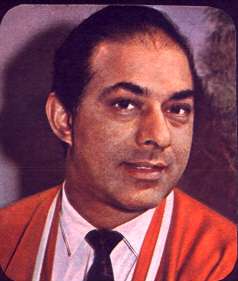
APART FROM BEING THE KING OF GHAZALS:
TALAT HAS STARRED IN 13 FILMS MAKING HIM ONE OF BOLLYWOOD'S BIGGEST SINGING STARS :
"RAJLAXMI" 1945 KANANBALA
"TUM AUR MAIN" 1947 KANANDEVI
"SAMAPTI" 1949 BHARTI DEVI
"ARAAM" 1951 MADHUBALA , DEV ANAND
"DIL-E-NADAAN" 1953 SHYAMA, PEACE KANWAL
"DAAK BABU" 1954 NADIRA
"WARIS" 1954 SURAIYA, NADIRA
"RAFTAAR" 1955 NADIRA
"DIWALI KI RAAT" 1956 ROOPMALA, SHASHIKALA
"EK GAON KI KAHANI"1957 MALA SINHA
"LALA RUKH" 1958 SHYAMA
"MAALIK" 1958 SURAIYA
"SONE KI CHIDIYA" 1958 NUTAN
LEGEND: TALAT MAHMOOD
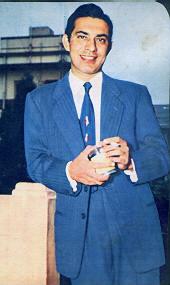
TALAT WAS THE ONLY SINGER IN THE FILM INDUSTRY WHOSE URDU DICTION WAS FLAWLESS AND PERFECT. NO OTHER SINGER COULD MATCH HIM ON THIS COUNT ! SOME OF THE GIANTS OF THE POETIC WORLD (SHAYER'S / POETS ) WHO HAVE SPECIALLY PENNED SOUL STIRRING AND HEART WARMING LYRICS FOR TALAT:
Majrooh Sultanpuri, Hasrat Jaipuri, Sahir Ludhyanvi, Shakeel Badayuni, Rajinder Krishan, Zia Sarhadi, Asad Bhopali, Jan Nissar Akhtar, S.H. Bihari, Prem Dhawan, Qamar Jalalabadi, Indeewar, Shailendra, Kaifi Azmi, Bezad Lukhnavi, Naqsh Lyallpuri, Nakshab, Raja Mehdi Ali Khan, Khumar Barabankvi, Bharat Vyas, Gulshan Sufi, P.L. Santoshi, D.N. Madhok, Ahmad Wasi ...... and so many more
LEGEND: TALAT MAHMOOD
SINGING CAREER:
Talat apprenticed classical music under Pandit S.C.R. Bhat at Morris Music College some time in the 30s. He started his career purely as a ghazal singer in 1939. Talat Mahmood began his singing career at the age of 16 in 1939 when he began singing the Ghazals of Daag, Mir, Jigar etc. on All India Radio, Lucknow. his voice had a quality distinct from all the other singers. HMV was quick to notice this and offered talat his first disc in 1941 "sab din ek samaan nahin tha, ban jaoonga kya se kya main, iska to kuch dhyan nahin tha". indeed how prophetic were these words. little did talat know that he was soon to rise to become the greatest names in Ghazals on the Indian Sub-continent!.
His reputation as a fine and promising ghazal singer was not limited to his hometown of Lucknow, but it reached the city that proved to shape his destiny - Calcutta. The then famous ghazal singers were Ustad Barkat Ali Khan, K.L. Saigal and M.A. Rauf. The classical songs he sang were " Sapnon Ki Suhaani Duniyaa Ko " for film Shiqast and " Laage Tose Naina " for Chaandi Ki Deewar.
In 1944 came the hit "Tasveer teri dil mera behela na sakegi". The song was an overnight sensation. It's popularity was so phenomenal and unrivalled that even today it remains one of the top selling non-film discs. This disc brought talat fame throughout India and soon he was beckoned by the Calcutta film industry. Talat made cameo appearances and starred in about 16 movies, for both the Calcutta Film Industry (hub of the 1940s) and Bollywood. The 3 movies in which he starred were regional hits in Calcutta.
But fate had even bigger things in store for talat and in 1949 talat came to the Hollywood of India - Bombay/Bollywood. His name and fame had already preceded him and people in the bombay film industry were already aware of this talented singer and soon he was offered the song. His big break came with the song "Ae dil mujhe aisi jagha le chal jahan koi na ho" composed by music-composer Anil Biswas for the soundtrack of the movie "Arzoo". The song was a smash-hit and ensured the box-office success of the movie.
In talat, the music directors had found the perfect voice for the Ghazals. His diction and intonation were word perfect. his expressive style and emotional nuances were unparalleled. the mellowness, sweetness and pathos in his voice set him apart from all the other singers. Soon he was unanimously hailed as "King of Ghazals". His romantic duets and solos numbered in hundreds and hit after hit followed and Talat grew into a legend.
Talat is survived by his son Khalid Mahmood, a reputed singer in his own right.
Courtesy: Wikipedia:
LEGEND: TALAT MAHMOOD
The golden voice still haunts...
Although he was not prolific, Talat Mehmood remains the favourite of those who prefer soft, romantic melodies. Today, on his eighth death anniversary, V. GANGADHAR takes a trip down memory lane.
Playback singer Talat Mehmood (on the harmonium) ... noted for his romantic melodies.
EVEN THE most ardent Hindi film buffs may not remember films like "Baradari'' and "Thokar''. Or details about their music directors, Naushad and Sardar Malik. But songs from these films, "Tasveer Banata Hoon'' and "Ae Gham-e-did Kya Karoon'' are remembered and hummed to this day. Crooner Talat Mehmood, who died on this day five years ago and sang these numbers, had the unique quality of rendering such ever popular songs, which were part of unsuccessful films and composed by not-so-famous music directors. At the same time, the singer did not let down more famous music directors who, for reasons of their own, used him rather sparingly.
Every song Talat Mehmood sang for Naushad ("Babul''), Ravi ("Ek Saal'') and O. P. Nayyar ("Sone Ki Chidiya'') turned out to be super hits and are remembered to this day. "Talat Saab stood apart," observed Manohar Iyer, founder of `Keep Alive,' a Mumbai-based organisation which promotes Hindi film music in its golden period, from the 1940s to 1960s.
"There are numerous people who can sing like Mohamad Rafi, Mukesh or Kishore Kumar but hardly anyone who can recapture the softness and romantic melody of Talat Mehmood". No wonder, when melody ruled the roost in the Hindi film world, Talat Saab remained the number one singer for about seven years from 1950. He was totally identified with Dilip Kumar ("Babul'', "Daag'', "Tarana'', "Footpath'', "Sangdil'', "Shikast''), sang for Raj Kapoor ("Aashiana'', "Anhonee''), Dev Anand ("Taxi Driver''), V. Shantaram ("Parchain'', "Subah Ka Tara'') and other lesser-known heroes.
He was sought after by every music director including C. Ramchandra, Shanker-Jaikishan, Roshan, Ghulam Mohammad and Madan Mohan. This period also produced some of the most wonderful duets, pairing Talat mainly with Lata Mangeshkar and also with Asha Bhosle and Geeta Dutt. "Singing duets with Talat bhai was something special," observed Lata Mangeshkar. Around 700 songs including private recordings and ghazals in a career span of around 20 years may not be all that impressive. But quality is not judged by quantity.
Born and educated in Lucknow (Morris College), Talat Mehmood began recording for All India Radio, Lucknow, and then Calcutta. His first hit remains an evergreen hit, "Tasveer Banata Hun... Tasveer Nahin Banti''. New Theatres, Calcutta, which he joined in the early 1940s, did not provide him with much work. "Rajalakshmi'' was his first film. He recorded two songs for it. Migrating to Bombay in 1949, Talat found the response encouraging. Both Naushad and Anil Biswas claimed credit for `discovering' Talat in the 1950-releases, "Babul'' and "Arzoo'', though he sang for a 1949 film, "Rakhee'' with music score by Husanlal Bhagatram.
The next five to seven years found Talat zooming to the top with an enviable score of hits. Mohamad Rafi was establishing himself, Mukesh was just getting discovered by Raj Kapoor, and Manna Dey and Kishore Kumar were waiting in the wings.
Slim and good-looking, Talat Mehmood accepted offers to play the hero in Hindi films. Beginning with A. R. Kardar's "Dil-e-Nadan'', the singing hero acted in about 10 films which despite many hit songs, did not create an impression on the people. When I interviewed him for the first time after a concert in Ahmedabad, the singer wondered if the hero image affected his singing career. "An impression was created," he recalled, "that as a hero, I would only sing my own songs. Offers from music directors began to dry up."
From the 1960s, the direction of Hindi film music began to change. So did the attitude of successful heroes. Dilip Kumar was no longer the tragic, love-lorn hero whose personality suited the soft melodies of a Talat Mehmood. He switched over to loud roles and Naushad who composed music to most of the films, opted for Mohamad Rafi. Naushad also recorded several Talat songs for his own film, "Palki'' but had to re-record the numbers using Rafi at the insistence of the film's hero, Rajendra Kumar who had a string of silver and golden jubilees.
Finally, it was the number of hits and jubilees and identification with successful camps, which mattered, not the success of a music score.
Mukesh with much less talent, became a permanent fixture at the RK camp and was also the chosen one of successful music director, Kalyandji-Anandji. For some reason, Talat Saab could not discover and stick to such a successful camp. On the contrary, S. D. Burman who was upset at the box office failure of the critically-acclaimed Bimal Roy's "Devdas'' which had a memorable music score, wanted to replace Talat with Rafi for the next Bimalda production, "Sujata'' to render the famous number "Jalte Hain Jis Keliye''. Fortunately, Bimalda put his foot down and the Talat number became a hit.
There was no truth in the charge that he could not sing faster, jazzy numbers. Remember the foot-tapping "Andhe Jahan Se, Andhe Raatein'' from "Patita'', "Tim Tim Tim'' from "Mausi'' or "Aha Rim Jhim Taaren'' ("Usne Kaha Tha''). Perhaps, the singer could not `cultivate' people who mattered in the industry. Despite fewer films, Talat saab remained the favourite of those who preferred soft, romantic tunes. His records and later cassettes sold well, and his concerts both in India and abroad were packed.
The Afghan royal family was among his admirers. ``King Zahir Shah attended my concerts with members of his family, including women," recollected Talat Saab. "It was for the first time the royal family women patronised a concert."
Ups and downs in life did not matter to Talat Saab. In our meetings, both in Ahmedabad and Mumbai, he came out as someone who was happy with life and had warm words of praise for his fellow singers. ``There was no rat race among us," he declared. "We were all different types of singers and there was enough scope for all of us".
Our last meeting was rather painful. Victim of a stroke, the great singer could not speak. But there was no mistaking the sincerity and warmth in his eyes.
Courtesy:The Hindu:
LEGEND: TALAT MAHMOOD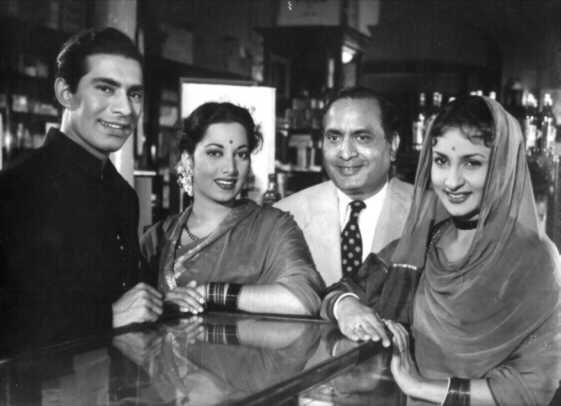
Talat Mahmood, Suraiya and Nadira
Memorable songs
Even though Talat sang hundreds of hits, some of his most memorable songs from Hindi cinema are;
* Humse aaya na gaya - Dekh Kabira Roya (1957)
* Jayen to jayen kahan - Taxi Driver (1954)
* Tasveer banata hoon - Baradari (1955)
* Dil-E-Nadaan tujhe hua kya hai - Mirza Ghalib (1954)
* Sham-E-Gham ki qassam - Foothpath (1953)
* Jalte hain jiske liye - Sujata (1959)
* Meri yaad me tum na - Madhosh (1951)
* Phir wohi sham wohi gam - Jahan Aara (1964)
* Aye mere dil kahi aur chal - Daag (1952)
NB We will be featuring some of these:
LEGEND: TALAT MAHMOOD
TALAT MAHMOOD IN THE FILM DIL-E-NADAAN:
Interesting facts
For Talat's film 'DIL E NADAAN', famous producer A.R. Kardar launched an 'All India Beauty Contest' to hunt for a new heroine to act opposite this immensely popular and much sought after Singing Star. The winner was beautiful Peace Kanwal.
In 1956, Talat became the first ever Indian playback singer to go abroad for commercial concerts.
On Talat's US Concert Tour, Talat's popularity prompted famous New York television host Joe Franklin to invite Talat on his hugely popular programme "The Joe Franklin Show" watched by over 25 million Americans. He introduced Talat to American audiences as "The Frank Sinatra Of India !"
1954, the year Binaca Geet Mala switched to a countdown system; the topper was Talat Mahmood's " Jayen to jayen kahan ".
Producer-Director-Studio Owner Mehboob Khan of 'Mother India' fame, would always put his finger on Talat's throat and tell him "Khuda ka noor tumhare gale mein hai!"
Talat's first recording: "Sab din ek samaan nahin hote" - for HMV in 1941.
Talat's first film recording: "Jago musafir jago" for film RAJLAXMI in 1945.
Talat's last recording: Ghazal album titled "GHAZAL KE SAAZ UTHAO" for HMV in 1986.
Has sung in 17 Indian languages to include - Urdu/ Hindi, Bengali, Bhojpuri, Telugu, Gujrati, Marathi, Malayalam, Punjabi, Sindhi, Awadhi, Marwari, Assamese.
In 1979, Talat performed at the world renowned Royal Albert Hall. Talat was the second Indian playback singer after Lata Mangeshkar to be invited to perform at this historical venue
LEGEND: TALAT MAHMOOD
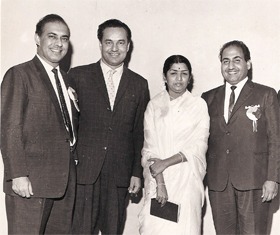
VERY RARE: THE KINGS AND QUEEN GATHERS:
TALAT, MUKESH, LATA AND RAFI:
LEGEND: TALAT MAHMOOD

MOVIE : BAABUL 1950
SINGER: TALAT MAHMOOD
MUSIC : NAUSHAD
LYRICS: SHAKEEL BADAYUNI
1) MERE JEEWAN SAATHI BICHHAD GAYE
http://www.mastimag.com/download.php?song_id=40065
1) THE VIDEO: MERE JEEWAN SAATHI
Khushi ke sath duniya mein, Hazaron gam bhi hote hain
Along with happiness in this world, there are a thousand sorrows
Jahan bajati hain shahanai, Vahan matam bhi hote nain
Where the shehnai (wedding flute) plays, there is also a dirge
(Mera jivan sathi bichhad gaya, lo khatam kahani ho gai
My life's mate has left me, the story is ended
Lo khatam kahani ho gai)2
The story has ended
(Qismat ne kiye vo dil pe sitam do chahane vale mil na sake)2
Fate dealt such a blow to our hearts, that two lovers could not meet
(Kahane ko bahar ai thi magar do phul khushi ke khil na sake)2
Spring arrived in name only, two flowers of happiness could not blossom
Aramanon ka gulashan bigad gaya barabad javani ho gai
The garden of desires has withered away, the youth lost
Lo khatam kahani ho gai
The story has ended
(Dil deke yahan sab har gaye duniya mein kisiki jit kahan)2
Having lost our hearts, we lost everything, who can win in this world?
(Hothon pe hain shikave qismat ke vo pyar bhare ab git kahan)2
Our lips lament our fate, where are those songs of love?
Jab khel hi dil ka bigad gaya har baat purani ho gai
When the game of the heart has been lost, all else is the same old story
Lo khatam kahani ho gai
The story has ended
(Mera jivan sathi bichhad gaya, lo khatam kahani ho gai
My life's mate has left me, the story is ended
Lo khatam kahani ho gai)2
The story has ended
Trans: Venkat
This is one of my Talat's Favorite: Saw that movie decades ago, and still remember that stunning performance of Dilip Saab:
The opening shayr certainly raises the goosebumps. Closely listening to the voice of Talat in this one......one can only remenisence is awe!!! asj/file
LEGEND: TALAT MAHMOOD

MOVIE : TAXI DRIVER 1954
SINGER: TALAT MAHMOOD
MUSIC : S.D. BURMAN
LYRICS: SAHIR LUDHIANVI
2) JAYE TO JAYE KAHAAN
http://www.mastimag.com/download.php?song_id=40067
2) THE VIDEO: JAYE TO JAYE KAHAAN
2) JAYE TO JAYE KAHAAN
Jaayen to jaaye kahaan?
If I must go, where could I go?
Samjhegaa kaun yahaan dard bhare dil ki zubaan?
Who here will understand the words of a heart full of pain?
Jaayen to jaaye kahaan?
If I must go, where could I go?
Mayuusiion kaa majamaa hain jee mein
A crowd of disappointments resides in my soul
Kya reh gayaa hai is zindagi mein
What is left for me in this life?
Ruuh mein gham, dil mein dhuuaan
In my soul is sadness, in my heart is smoke
(Unka bhi gham hai, apna bhi gham hai
She has her sorrows, I have my own
Ab dil ke bachne kii ummiid kam hai)2
Now there is little hope of saving my heart
Ek kashtii, sau tuufaan
For it is like a single boat against a hundred storms
Jaayen to jaayen kahaan?
If I must go, where could I go?
Samjhegaa kaun yahaan dard bhare dil ki zubaan?
Who here will understand the words of a heart full of pain?
Jaayen to jaayen kahaan?
If I must go, where could I go?
Samjhegaa kaun yahaan dard bhare dil ki zubaan?
Who here will understand the words of a heart full of pain?
O jaanewaale daaman chhudaake
Oh traveler who is leaving my embrace
mushkil hai jeenaa tujhko bhuulaake
Forgetting you and continuing to live is difficult
Is se to hai maut aasaan
Even death is easier than this
Seenen mein shole, saanson mein aahen
In my chest are embers, in my breaths are sighs
Is zindagii se kaise nibhaaye
What is there for me to fulfill in this life?
Har jazabaat hai viiraan
My every emotion is empty
Jaayen to jaayen kahaa?
If I must go, where could I go?
Samjhegaa kaun yahaan dard bhare dil ki zubaan?
Who here will understand the words of a heart full of pain?
LEGEND: TALAT MAHMOOD
MOVIE : DIL-NADAAN 1953
SINGER: TALAT MAHMOOD
MUSIC : SHAKEEL BADAYUNI
LYRICS: GHULAM MOHAMMAD
3) ZINDAGI DENE WALE SUN
http://www.mastimag.com/download.php?song_id=40063
3) THE VIDEO: ZINDAGI DENE WALE SUN
